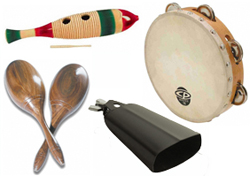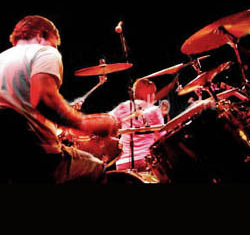Denominational and theological differences between churches are as weak as sewing thread in comparison to the divisive question of drums in a worship service.
Where some congregations see a method of regulating tempo and establishing new musical styles, others envision a source of noise and an infiltration of secular values.
Should churches incorporate percussion instruments into their musical compositions? If so, how should appropriate use be determined, and by whom? Is an acoustic drum set superior to an electronic one? Is “drum tuning” an oxymoron? Let’s find out.
Rhythm, melody, and harmony make up the triad of music. Just as a stool must have three legs to function as a stable structure, so must music include all of its three elements to form a cohesive unit.
Music without a separate percussive presence must extract rhythmic value from the melodic and harmonic instruments. Music structured in this way creates a subservient role for the rhythm and emphasizes the song’s melody and harmony.
Traditional hymns often take this approach and, in the process, create in the worshipper’s mind a precise concept of what “church music” is, or more importantly, is not. The hymn author probably did not intend to define the character of church music for all time; he or she simply sought to edify God in the style prevalent in that period.
The issue then becomes determining the line of demarcation between music that is offensive to those worshiping and music that impedes on a cultural bias toward familiar musical styles.
In The Forefront
Current musical culture has once again embraced the rhythm section and thrust it into the forefront. To mirror this shift, some churches have brought percussion instruments into the sanctuary with varying degrees of acceptance.
Each congregation’s selection of rhythm instruments typically parallels the current doctrinal position of that local body. Transition to drum instrumentation rarely begins with a full set of drums; instead, an initial foray is made into keyboard-based sounds, through hand percussion, then orchestral percussion, and finally to a stage drum set.
Properly introducing each step at the right time is crucial to creating rhythmic progress without causing a percussive derailment.
Modern digital pianos, synthesizers, and even home keyboards contain a wonderful selection of drum and percussion sounds. A keyboardist may simply call up an appropriate preset sound and play along with the choir and organ, adding just the right amount of rhythm without becoming a noticeable element.

If exercised with discretion, the “phantom drums” will pave the wave for further instrumentation, usually in the form of hand percussion devices. Shakers, guiros, bongos, and, yes, tambourines are inexpensive instruments that can add marvelously to a worship experience. Companies such as Latin Percussion (LP) and Remo make these items in a bewildering array of diversity.
Of course, there is nothing worse than a rhythm instrument played out of time or too loudly, so training is essential to realize the product’s benefit. Many churches incorporate orchestral accompaniment for choir and solo numbers, so the addition of cymbal, triangle, and timpani can be accomplished without causing major disruption.
Again, the key to success lies in constrained use of the instrument by a trained player.





















